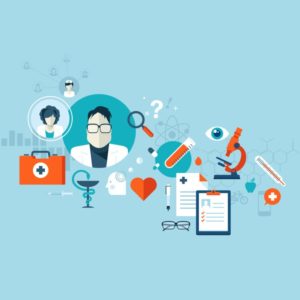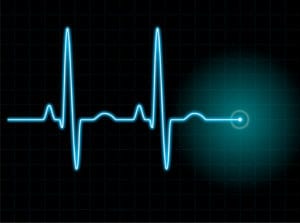 Healthcare has long been a ripe vertical market for biometric technology. Health records are extremely valuable personal documents, drugs and pharmaceuticals are in high demand and need protecting, and doctors are extremely poor on time. Biometric technologies, with their high levels of security and convenience, are capable of addressing these problems in healthcare, bringing efficiency and high levels of accountability to hospitals and clinics.
Healthcare has long been a ripe vertical market for biometric technology. Health records are extremely valuable personal documents, drugs and pharmaceuticals are in high demand and need protecting, and doctors are extremely poor on time. Biometric technologies, with their high levels of security and convenience, are capable of addressing these problems in healthcare, bringing efficiency and high levels of accountability to hospitals and clinics.
Of course, that’s not all biometrics can bring to healthcare. As strong authentication evolves with the proliferation of connected and mobile tech, new solutions are arriving to address some of healthcare’s most vital problems. Throughout the month of June, FindBiometrics will be examining biometrics in healthcare.
Welcome to Healthcare Month.
Efficiency, Accountability, Accessibility
Medical fraud is a driving factor in the adoption of biometric technology by hospitals and clinics. Drugs cost money, and in some cases are addictive and susceptible to abuse. To protect the health of the public, prevent insurance fraud, and eliminate administrative redundancies, there’s biometric patient ID. By using a user’s biometrics for identification rather than a health card, there’s much less risk that the healthcare system is being taken advantage of by fraudsters. On top of that, duplicate records can be eliminated as well as other administrative inefficiencies. Patient ID can be found in hospitals, at clinics and blood banks.
Additionally, there are fringe benefits that come with employing biometrics for patient identification. In medical outreach programs that have clinicians administering vaccines in regions with low literacy rates or an abundance of languages, biometric ID breaks down communication barriers. Healthcare authentication tech even has law enforcement applications – in conjunction with missing persons databases, biometric patient ID can also help find abducted children when they are taken to a hospital.
Follow the links below to see how biometric identification is making the patient experience easy, accessible and more accountable.
BIO-key Biometrics Aim For a Positive Donor Experience in Blood Centers
Fingerprint Scanner Aims to Extend Healthcare in Developing World
The Coolness Factor: Lumidigm Expands VaxTrac System To 31 New Clinics in Southern Benin
Finger Vein Sensors Further Bring Biometric Healthcare to Turkey
Biometric Patient ID Improves Efficiency at Hospitals
Smart Cards and Cloud Technology Bolster Patient ID in Maine
A Cure For The Time Poor
 The data and materials inside a hospital or clinic are critically important. Drugs need to be secured and accounted for, doors need to be locked and the hospital’s networks absolutely must be protected. Yet, at the same time, health-spaces are dynamic workplaces, and every second lost to high friction security is a second that’s dearly missed. As regular readers will know from our recent Physical Access Month, the kind of security and convenience demanded in this situation is built in to biometric technology.
The data and materials inside a hospital or clinic are critically important. Drugs need to be secured and accounted for, doors need to be locked and the hospital’s networks absolutely must be protected. Yet, at the same time, health-spaces are dynamic workplaces, and every second lost to high friction security is a second that’s dearly missed. As regular readers will know from our recent Physical Access Month, the kind of security and convenience demanded in this situation is built in to biometric technology.
Thanks to advances in biometrics, hospitals and clinics are doing away with passwords, PINs and key cards when it comes to their networks, locked doors and drug cabinets. Follow the links below to see the most recent innovations in biometrics that are allowing professionals to do their job with greater ease without sacrificing security or accountability.
Fingerprints To Replace Physicians’ Passwords
Symantec and Imprivata Partner For Biometric Healthcare
HIMSS 2015: Imprivata Unveils Two Factor Solution
HID Global to Showcase Smart Card Authentication at HIMSS 2015
Introducing Connected, Biometric Narcotics Storage Systems
Rx Safes Offers Grant Writing Services to Potential Clients
NHS Foundation Trust Orders Tactivo Readers
Swedish Healthcare Prescription System Approves Tactivo
Biometrics Against Child Abduction: M2SYS Announces KinderGuardian
Bringing The Hospital Home
 Moving outside of the realm of authentication, new innovations in vital biometric sensors, connectivity and mobility have brought with them a new and exciting possibility: telehealth and home care. Telehealth platforms, which leverage wearable tech and vitla biometric sensors, allow patients to receive round the clock professional monitoring from home. In addition to freeing up hospital bed space, the biometric telehealth solutions of today allow for 24 hour health analytics, allowing doctors and physicians to better diagnose maladies.
Moving outside of the realm of authentication, new innovations in vital biometric sensors, connectivity and mobility have brought with them a new and exciting possibility: telehealth and home care. Telehealth platforms, which leverage wearable tech and vitla biometric sensors, allow patients to receive round the clock professional monitoring from home. In addition to freeing up hospital bed space, the biometric telehealth solutions of today allow for 24 hour health analytics, allowing doctors and physicians to better diagnose maladies.
The following links, presented in concert with our sister site Mobile ID World, will provide you with an understanding on how vital biometrics and mobility are combining to bring healthcare out of the hospital and into the home.
NEC Launches Comprehensive Telehealth Platform
Vital Biometrics and Remote Care at HIMSS 2015
Medication Management App Embraces Biometric Data
With Mobile Revolution, Telehealth Leaps Ahead of Lumbering US Healthcare System
Vital Connect Doing Brisk Business with Remote Healthcare Applications
*
Stay posted throughout June as we dive deeper in the the world of biometrics and healthcare. Be a part of the conversation by following us on Twitter and tweeting with the hashtag #FBHealth.
—
June 3, 2015 – by Peter B. Counter


Follow Us